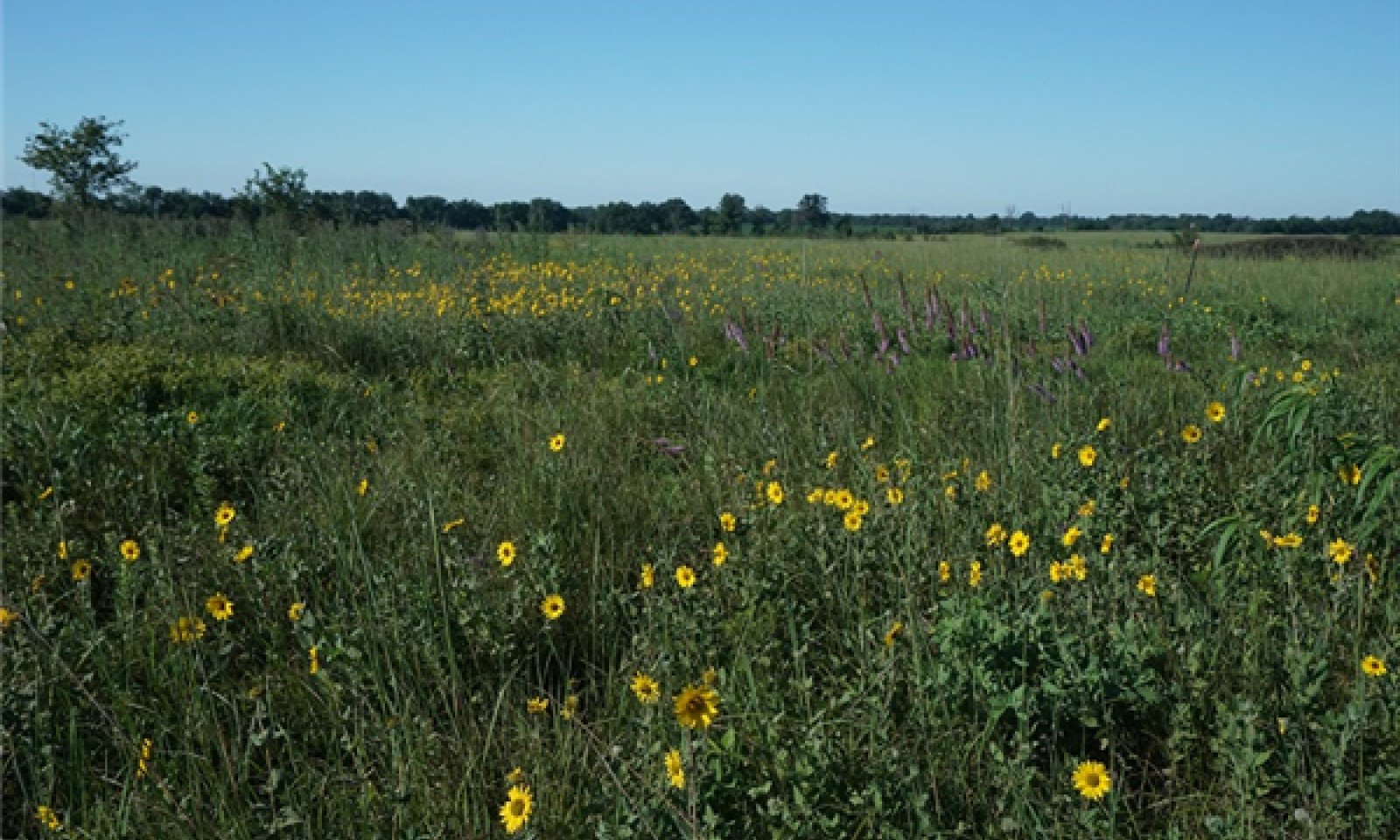

Natural Resources
Conservation Service
Ecological site R113XY001MO
Claypan Summit Prairie
Last updated: 5/17/2024
Accessed: 12/21/2025
General information
Approved. An approved ecological site description has undergone quality control and quality assurance review. It contains a working state and transition model, enough information to identify the ecological site, and full documentation for all ecosystem states contained in the state and transition model.
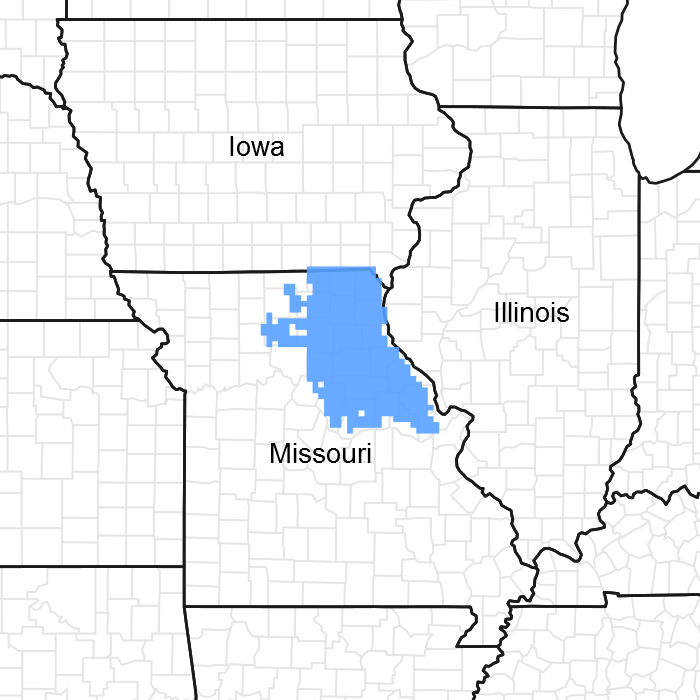
Figure 1. Mapped extent
Areas shown in blue indicate the maximum mapped extent of this ecological site. Other ecological sites likely occur within the highlighted areas. It is also possible for this ecological site to occur outside of highlighted areas if detailed soil survey has not been completed or recently updated.
MLRA notes
Major Land Resource Area (MLRA): 113X–Central Claypan Areas
The western, Missouri portion of the Central Claypan is a weakly dissected till plain. Elevation ranges from about 1,000 feet in the north along the divide between the Missouri and Mississippi River watersheds to about 625 feet where the North Fork of the Salt River flows out of the area. Relief is generally low, with low slope gradients and relatively narrow drainageways. Most of the Central Claypan is in the Salt River watershed. The characteristic “claypan” occurs in the loess that caps the pre-Illinoisan aged till on the broad interfluves that characterize this region. Till is exposed on lower slopes. The underlying Mississippian aged limestone and Pennsylvanian aged shale is exposed in only a few places along lower slopes above the Salt River.
Classification relationships
Major Land Resource Area (MLRA) (USDA-NRCS, 2022):
113 – Central Claypan Areas
Terrestrial Natural Community Type in Missouri (Nelson, 2010):
The reference state for this ecological site is most similar to a Hardpan Prairie.
National Vegetation Classification System Vegetation Association (NatureServe, 2010):
The reference state for this ecological site is within the Central Tallgrass Prairie (CES205.683), and is most similar to Schizachyrium scoparium - Bouteloua curtipendula - Agrostis hyemalis - Eleocharis spp. Hardpan Herbaceous Vegetation (CEGL002249).
Geographic relationship to the Missouri Ecological Classification System (Nigh and Schroeder, 2002):
This ecological site occurs throughout the Claypan Till Plains and Wyaconda River Dissected Till Plains Subsections, and in adjacent Land Type Associations of the Mississippi River Hills and Chariton River Hills Subsections.
Ecological site concept
Claypan Summit Prairies occur throughout the Central Claypan (Western part) on broad interfluve summits, and are the dominant ecological sites in the region. They are associated with loess and till prairie and savanna ecological sites, which are downslope. Soils have a silty clay subsoil that perches water in the spring, and affects rooting depth and species composition. The reference plant community is prairie dominated by Indiangrass (Sorghastrum nutans), big bluestem (Andropogon gerardii), little bluestem (Schizachyrium scoparium) and prairie dropseed (Sporobolus heterolepis), with a wide variety of prairie wildflowers and wetness-tolerant sedges (Carex sp.).
Associated sites
| R109XY046MO |
Till Upland Savanna Till Upland Savannas are often downslope from Claypan Summit Prairies. |
|---|---|
| R113XY002MO |
Loess Upland Prairie Loess Upland Prairies are often downslope from Claypan Summit Prairies. |
Similar sites
| R113XY002MO |
Loess Upland Prairie Loess Upland Prairies have somewhat similar vegetation but are generally found adjacent to but below Claypan Summit Prairies. They are typically more productive and more sloping. |
|---|
Table 1. Dominant plant species
| Tree |
Not specified |
|---|---|
| Shrub |
(1) Amorpha canescens |
| Herbaceous |
(1) Schizachyrium scoparium |
Physiographic features
This site is on broad upland summit interfluves and divides, with slopes of 0 to 5 percent. The site generates runoff to adjacent, downslope ecological sites. This site does not flood.
The following figure (adapted from Young and Geller, 1995) shows the typical landscape position of this ecological site, and landscape relationships among the three dominant upland ecological sites in this MLRA. It is within the area labeled “1” on the figure.

Figure 2. Typical sequence of ecological sites associated with the western part of 113
Table 2. Representative physiographic features
| Landforms |
(1)
Interfluve
(2) Divide (3) Ridge |
|---|---|
| Runoff class | Very low to medium |
| Flooding frequency | None |
| Ponding frequency | None |
| Elevation | 625 – 1,000 ft |
| Slope | 5% |
| Water table depth | 8 – 21 in |
| Aspect | Aspect is not a significant factor |
Climatic features
The western part of the Central Claypan Area MLRA has a continental type of climate marked by strong seasonality. In winter, dry-cold air masses, unchallenged by any topographic barriers, periodically swing south from the northern plains and Canada. If they invade reasonably humid air, snowfall and rainfall result. In summer, moist, warm air masses, equally unchallenged by topographic barriers, swing north from the Gulf of Mexico and can produce abundant amounts of rain, either by fronts or by convectional processes. In some summers, high pressure stagnates over the region, creating extended droughty periods. Spring and fall are transitional seasons when abrupt changes in temperature and precipitation may occur due to successive, fast-moving fronts separating contrasting air masses.
This western part of the MLRA experiences regional differences in climates that grade across the region. The basic gradient for most mean annual climatic characteristics is along a line from north to south. Both mean annual temperature and precipitation exhibit modest gradients along this line.
Mean January minimum temperature follows a north to south gradient. However, mean July maximum temperature shows hardly any geographic variation in the region. Mean July maximum temperatures have a range of only two to three degrees across the region.
Mean annual precipitation also varies along the north to south gradient – lower annual precipitation in the north, somewhat higher in the south. Seasonality in precipitation is very pronounced due to strong continental influences. June precipitation, for example, averages three to four times greater than January precipitation.
During years when precipitation is normal, moisture is stored in the soil profile during the winter and early spring, when evaporation and transpiration are low. During the summer months the loss of water by evaporation and transpiration is high, and if rainfall fails to occur at frequent intervals, drought will result. Drought directly influences ecological communities by limiting water supplies, especially at times of high temperatures and high evaporation rates. Drought indirectly affects ecological communities by increasing plant and animal susceptibility to the probability and severity of fire. Frequent fires encourage the development of grass/forb dominated communities and understories.
Superimposed upon the basic MLRA climatic patterns are local topographic influences that create topoclimatic, or microclimatic variations. For example, air drainage at nighttime may produce temperatures several degrees lower in valley bottoms than on side slopes. At critical times during the year, this phenomenon may produce later spring or earlier fall freezes in valley bottoms. Finally, the climate within a canopied forest ecological site is measurably different from the climate of the more open grassland or savanna ecological sites.
Source: University of Missouri Climate Center - http://climate.missouri.edu/climate.php;
Land Resource Regions and Major Land Resource Areas of the United States, the Caribbean, and the Pacific Basin, United States Department of Agriculture Handbook 296 - http://soils.usda.gov/survey/geography/mlra/
Table 3. Representative climatic features
| Frost-free period (characteristic range) | 151-165 days |
|---|---|
| Freeze-free period (characteristic range) | 183-193 days |
| Precipitation total (characteristic range) | 41-44 in |
| Frost-free period (actual range) | 146-167 days |
| Freeze-free period (actual range) | 181-197 days |
| Precipitation total (actual range) | 41-44 in |
| Frost-free period (average) | 158 days |
| Freeze-free period (average) | 188 days |
| Precipitation total (average) | 43 in |
Figure 3. Monthly precipitation range
Figure 4. Monthly minimum temperature range
Figure 5. Monthly maximum temperature range
Figure 6. Monthly average minimum and maximum temperature
Figure 7. Annual precipitation pattern
Figure 8. Annual average temperature pattern
Climate stations used
-
(1) KIRKSVILLE [USC00234544], Kirksville, MO
-
(2) COLUMBIA RGNL AP [USW00003945], Columbia, MO
-
(3) MEXICO [USC00235541], Mexico, MO
Influencing water features
This ecological site is influenced by a seasonal high water table, perched on the clayey subsoil. Some depressional areas pond for short periods of time, mostly in the spring. These shallow depressional areas were more common prior to the conversion of nearly all areas of this ecological site from prairie to cropland. Leveling and surface drainage have reduced or eliminated the shallow depressions.
This ecological site contains wetlands which fit into the MINERAL FLAT class in the Hydrogeomorphic (HGM) system (Brinson, 1993). The water source is direct precipitation, because there are no upslope contributing sites. Vertical water percolation in the soil is impeded by the clayey subsoil (the “claypan”), resulting in significant lateral discharge to adjacent downslope ecological sites. Adjacent sites include Headwater SLOPE HGM class sites in watershed headwaters. This discharge supports surface saturation in the adjacent areas.
In general, MINERAL FLAT areas provide watershed recharge and runoff that accumulates in downslope reaches as groundwater discharge and surface water accumulation. Wetland hydrology is effectively removed by surface ditches or subsurface tile drainage that directs vertical downward movement in a horizontal direction to the drainage element.
Cowardin wetland types include: Palustrine Emergent Temporarily Flooded and Intermittently Flooded (high-water table may cause soil saturation in late winter and early spring).
Soil features
These soils have an abrupt textural change to silty clay at about 10 to 14 inches, or a clayey subsoil that is similar to an abrupt textural change. Abrupt textural changes impede but do not exclude rooting. The soils were formed under prairie vegetation, and have dark, organic-rich surface horizons. They have silt loam surface horizons, and silty clay to clay subsoils. Parent material is loess underlain by pedisediment derived from loess and till. A seasonal high water table is perched above the abrupt textural change or clayey subsoil during the spring months in most years. Soil series associated with this site include Adco, Mexico, and Putnam.
The accompanying picture of the Mexico series shows a dark silt loam surface horizon over a thin, light-colored leached layer called an albic horizon. Below this is the claypan, a clay horizon that impedes water movement and root penetration. Indicators of seasonal wetness (redoximorphic features) are visible in the lower part of the profile. (Photo credit - NRCS)

Figure 9. Mexico series
Table 4. Representative soil features
| Parent material |
(1)
Pedisediment
|
|---|---|
| Surface texture |
(1) Silt loam (2) Silty clay loam |
| Family particle size |
(1) Clayey |
| Drainage class | Poorly drained to somewhat poorly drained |
| Permeability class | Very slow |
| Soil depth | 72 in |
| Surface fragment cover <=3" | Not specified |
| Surface fragment cover >3" | Not specified |
| Available water capacity (0-40in) |
6 – 7 in |
| Calcium carbonate equivalent (0-40in) |
Not specified |
| Electrical conductivity (0-40in) |
2 mmhos/cm |
| Sodium adsorption ratio (0-40in) |
Not specified |
| Soil reaction (1:1 water) (0-40in) |
5.1 – 7.3 |
| Subsurface fragment volume <=3" (Depth not specified) |
Not specified |
| Subsurface fragment volume >3" (Depth not specified) |
Not specified |
Ecological dynamics
Information contained in this section was developed using historical data, professional experience, field reviews, and scientific studies. The information is representative of very complex vegetation communities. Not all scenarios or plants are included or discussed. Key indicator plants, animals and ecological processes are described to help guide land management decisions. Plant communities will differ across the MLRA because of the naturally occurring variability in weather, and soils. The Reference Plant Community is not necessarily the management goal. The biological processes on this site are complex. Therefore, representative values are presented in a land management context. The species lists are representative and are not botanical descriptions of all species occurring, or potentially occurring, on this site. They are not intended to cover every situation or the full range of conditions, species, and responses for the site.
Historically, tallgrass prairies covered extensive parts of Nebraska, Illinois, Iowa, Missouri and Kansas (see accompanying map below from Illinois Natural History Survey) and extended into the more eastern states in the Midwest. (Sims and Risser, 2000) Tallgrass prairie is made up primarily of native perennial grasses and forbs, with occasional shrubs and trees and is further characterized by relatively moist, productive soils. Prairies depend on fire to maintain the ecosystem stability and diversity. Some of the benefits of fire in this community is the elimination of invasive plants, control of woody encroachment, and maintenance of site productivity, thereby helping to shape and sustain the prairie. (Schroeder, 1981)
Claypan Summit Prairies were a part of the tallgrass prairie with native grasses and forbs, but also had a substantial component of wet tolerant sedges. This expanse of grass stretched for miles and was only interrupted by shallow drainages whose wetness influenced and lessened the frequent, intense fires. Here the prairie transitioned into shrubby thickets and savannas with scattered trees. Leadplant, Carolina rose and New Jersey tea (Ceanothus americanus) were typical low growing shrubs that occurred over the site. Unlike most shrubs, these plants are both quite tolerant to fire. Islands of other shrubs such as dogwood (Cornus sp.), and coralberry (Symphoricarpos orbiculatus) were also found on the site (Nelson 2010).
With little to interrupt fire, this ecological site burned every 1 to 3 years. Fire removed dead plant litter (adjacent photo; photo credit NRCS) and provided room for a lush growth of prairie vegetation. Fire also kept woody species at bay. Grazing by native large herbivores, such as bison, elk, and white-tailed deer, also impacted these sites. Their activities would have altered composition and structure of the vegetation. Fuel loads would have been altered by heavy grazing and fire behavior affected, providing for a diversity of structure and composition. The partially wooded draws would have burned less intensely and frequently. During fire free intervals woody species would have increased in abundance and spread out onto the prairie.
Few known remnants exist and most are degraded by fire suppression or grazing by domestic livestock. The one exception is Tucker Prairie, the only sizable remnant of claypan-soil tallgrass prairie that once covered central and northeast Missouri. Tucker Prairie Natural Area is a 146 acre gently rolling, upland claypan prairie over silt loam soils derived from loess. Over 200 plant species are found here in 70 families and in more than 140 genera. The grasses are important as dominants, making up on the average over 50 percent of the plant cover. The principal grasses are big bluestem (Andropogon gerardii) and little bluestem. Indiangrass (Sorghastrum nutans) and prairie dropseed (Sporobolus heterolepis) are also prevalent. Switchgrass (Panicum virgatum) and prairie cordgrass (Spartina pectinata) are more localized in wetter areas. Numerous flowering plants such as asters (Symphyotrichum sp.), sunflowers (Helianthus sp.), blazing stars (Liatris sp.), goldenrods (Solidago sp.), wild indigo (Baptisia sp.), leadplant, and ragwort (Senecio sp.) are common. The prairie tract was acquired as a scientific facility by the University of Missouri in 1957 and dedicated in 1958. It has been designated as a Registered Natural Landmark by the National Park Service (University of Missouri, 1959).
Soils that are associated with this “claypan” ecological site concept occur on broad level summits. The term “claypan” refers to a clayey subsoil underlying loamy topsoil. The abrupt textural change between the silt loam topsoil and the silty clay subsoil, causes water to perch on the claypan during periods of soil wetness. Claypans with an abrupt textural change that underlie silt loam topsoil at 10 to 30 cm normally have low permeability, restrict soil, air, and water movement, have a perched water table in the spring and are acidic (Clark and others, 1998). Surface layers will become saturated and remain extremely wet for extended periods of time following heavy rainfall events. Subsoils may store large amounts of water, but usually much of this moisture is tightly held (bonded) so, during periods of below normal precipitation, plants stress quickly, reducing productivity. This claypan soil with its seasonal saturation supports populations of grassland crayfish whose burrows are used by northern crawfish frogs (Rana areolata circulosa). (Schmidt and Kucera, 1975)
Today, the reference state of Claypan Summit Prairies (see following photo of Tucker Prairie; photo credit - Chris Helzer) are nearly extirpated from the region as the former prairies have been converted to intensive agriculture or non-native cool season grasslands. This transition to row crop management and its effect on soil loss have significantly altered the hydraulic properties of this ecological site. Values of coarse and fine pores for cropland (100 years of cropping) were almost half those values from the reference native prairie site (unplowed Tucker Prairie). The mean value of the ease with which pores in a saturated soil transmit water (Ksat) was 57 times higher in the native prairie site than in a cropped field for the first 10 cm interval. The bulk density of the surface layer at the Tucker Prairie site was two-thirds of the value at the cropped field site and was significantly different throughout the soil profile, except for the 20 to 30 cm depth. These conditions, higher bulk density, lower soil water capacity, and lower hydraulic conductivity increase the runoff potential and soil erosion. Therefore, it is expected that surface runoff and associated pollutant loads will be higher for cropped fields than for reference site conditions (native prairie). (Mudgal and others, 2010)
In addition to the hydraulic changes brought on by the conversion of claypan prairies to agricultural uses, changes to the important soil microorganisms has also occurred. The extensive root systems of grasses and forbs associated with native prairies host diverse communities of soil microorganisms. The importance of microbial diversity in mediating critical soil biological processes and functions is critical to overall prairie soil health. Mycorrhizae protect the plant by suppressing root pathogens, increase drought tolerance by absorbing water for the plant, and aid in aggregation of soil particles to improve soil structure near the rhizosphere (Kremer and Veum 2015). Kremer and Veum (2015) used phospholipid fatty acids (PLFA) analysis to characterize claypan soils on similar landscapes in central Missouri to understand influences of different management practices on structure and function of soil microbial communities. They found that total fungal PLFA in native prairies exceeded all other management systems on claypan soils in supporting high and diverse soil microbial communities based on PLFA characterization. Continuous row-crop sites had the lowest PLFA readings. The reconstructed prairie site was intermediate to native prairie and row-crop sites.
A state and transition model diagram for the Claypan summit Prairie Ecological Site (R113XY001MO) follows this narrative. The following diagram suggests some pathways that the vegetation on this site might take. There may be other states not shown on the diagram. This information is intended to show what might happen in a given set of circumstances. It does not mean that this would happen the same way in every instance. Experts base this model on available experimental research, field observations, professional consensus, and interpretations. It is likely to change as knowledge increases. Local professional guidance should always be sought before pursuing a treatment scenario.
State and transition model
More interactive model formats are also available.
View Interactive Models
Click on state and transition labels to scroll to the respective text
Ecosystem states
States 1 and 5 (additional transitions)
| T1A | - | Fire suppression greater than 20 years, woody invasion |
|---|---|---|
| T1B | - | Tillage, vegetative seeding, grassland management |
| T1C | - | Tillage, conservation cropping system, surface drainage. |
| R2A | - | Woody removal, prescribed fire 1-3 years |
| T2A | - | Woody removal, tillage, vegetative seeding, grassland management |
| T2B | - | Woody removal, tillage, conservation cropping system |
| T3A | - | Tillage, conservation cropping system, surface drainage. |
| T3B | - | Vegetative seeding, prescribed fire, grassland management |
| T4A | - | vegetative seeding grassland management |
| T4B | - | Vegetative seeding, prescribed fire, grassland management |
| R5A | - | Vegetative seeding, prescribed fire 1-3 years |
| T5A | - | Tillage, conservation cropping system, surface drainage. |
State 1 submodel, plant communities
| 1.1A | - | Fire-free interval greater than 10 years |
|---|---|---|
| 1.2A | - | Fire interval 1-3 years |
State 2 submodel, plant communities
State 3 submodel, plant communities
State 4 submodel, plant communities
State 5 submodel, plant communities
State 1
Reference
This State is native tall grass prairie dominated by little bluestem, switchgrass and forbs, but also a substantial component of wet tolerant sedges. This State occurs on level to gently sloping soils that have a seasonal high water table that is perched above the abrupt textural change or clayey subsoil during the spring months in most years. This condition influences the species composition and site productivity. Two phases can occur that will transition back and forth depending on fire frequencies. Longer fire free intervals will allow woody species to increase such as gray dogwood and eastern redcedar. When fire intervals shorten these woody species will decrease. This State is extremely rare. Only one documented reference site in the Missouri portion of this MLRA still exists. Nearly all sites have been converted to cool season grasslands and croplands.
Community 1.1
Lead Plant - Carolina Rose/Little Bluestem - Big Bluestem

Figure 10. Tucker Prairie, Callaway County, Missouri (photo credit - Fred Young, NRCS)
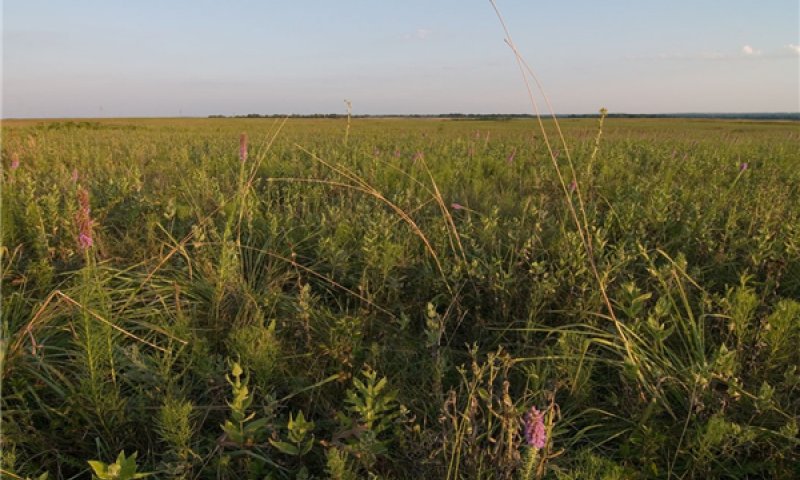
Figure 11. Tucker Prairie, Callaway County, Missouri (photo credit - MDC)
This phase has scattered lead plant, New Jersey tea, and prairie willow (Salix humilis) with grasses such as big bluestem, Indiangrass and prairie dropseed dominating the ground layer. Numerous forbs such as Missouri coneflower (Rudbeckia missouriensis), prairie clovers (Dalea sp.), blazing star, rosinweed (Silphium integrifolium), and compass plant (Silphium laciniatum) are also present and locally abundant. Fire frequencies of 1 to 3 years helped maintain the community structure and composition. The following "plant type" list is based on reconnaissance-level plots, inventory plots, as well as commonly occurring species listed in Nelson (2010). Species identified from plot data include cover percentages and canopy heights. Species not found in plots, but listed in Nelson, do not include cover and canopy data.
Forest understory. The following "Understory plant type" list is based on reconnaissance-level plots, inventory plots, as well as commonly occurring species listed in Nelson (2010). Species identified from plot data include cover percentages and canopy heights. Species not found in plots, but listed in Nelson, do not include cover and canopy data.
Figure 12. Annual production by plant type (representative values) or group (midpoint values)
Table 5. Annual production by plant type
| Plant type | Low (lb/acre) |
Representative value (lb/acre) |
High (lb/acre) |
|---|---|---|---|
| Grass/Grasslike | 2244 | 5943 | 9643 |
| Forb | 954 | 3970 | 6985 |
| Total | 3198 | 9913 | 16628 |
Table 6. Ground cover
| Tree foliar cover | 0% |
|---|---|
| Shrub/vine/liana foliar cover | 0.00-0.99% |
| Grass/grasslike foliar cover | 2-25% |
| Forb foliar cover | 2-25% |
| Non-vascular plants | 0% |
| Biological crusts | 0% |
| Litter | 10-95% |
| Surface fragments >0.25" and <=3" | 0% |
| Surface fragments >3" | 0% |
| Bedrock | 0% |
| Water | 0% |
| Bare ground | 0.1-25.0% |
Table 7. Canopy structure (% cover)
| Height Above Ground (ft) | Tree | Shrub/Vine | Grass/ Grasslike |
Forb |
|---|---|---|---|---|
| <0.5 | 0% | 0-2% | 25-50% | 25-75% |
| >0.5 <= 1 | 0% | 0-2% | 25-50% | 25-75% |
| >1 <= 2 | 0% | 0-1% | 25-50% | 25-75% |
| >2 <= 4.5 | 0% | 0% | 10-50% | 0-2% |
| >4.5 <= 13 | 0% | 0% | 10-25% | 0% |
| >13 <= 40 | – | – | – | – |
| >40 <= 80 | – | – | – | – |
| >80 <= 120 | – | – | – | – |
| >120 | – | – | – | – |
Community 1.2
Lead Plant - Gray Dogwood/Little Bluestem-Big Bluestem
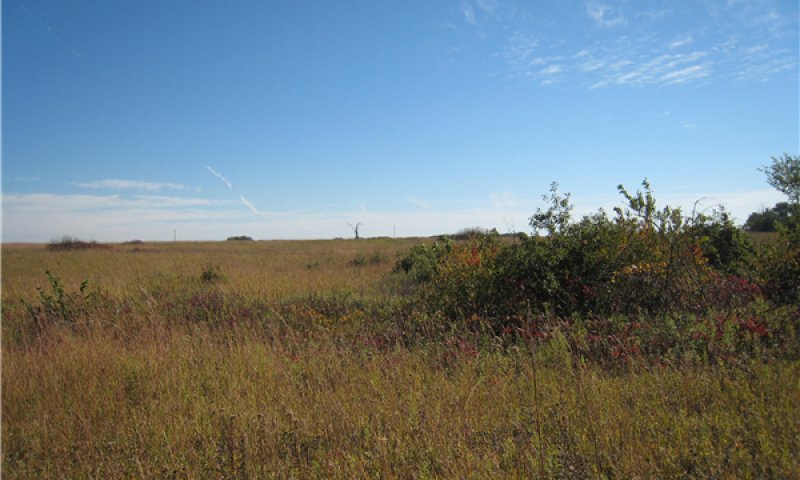
Figure 13. Tucker Prairie with woody encroachment (shubby phase) (Photo credit - MDC)
This phase is similar to community phase 1.1 but numerous shrubs are increasing due to longer periods of fire suppression. Some displacement of grasses and forbs may be occurring due to shading and competition from the increased densities of shrubs. Production is generally reduced due to lack of fire.
Pathway 1.1A
Community 1.1 to 1.2


This pathway results from fire suppression. With fire-free intervals of 10 to 20 years, woody species will increase in density and cover causing the community to gradually shift to phase 1.2 Some displacement of grasses and forbs may be occurring due to shading, competition from the increased densities of shrubs, and increased thatch build up.
Pathway 1.2A
Community 1.2 to 1.1


With increased fire frequencies, woody species will decrease in density and cover and over time this community will gradually shift back to community phase 1.1. Production levels will generally increase.
Conservation practices
| Prescribed Burning |
|---|
State 2
Woody Invaded Woodland
Degraded reference states that have experienced fire suppression for 20 or more years will transition to this state. With fire suppression, woody species such as pin oak (Quercus palustris), shingle oak (Quercus imbricaria), elm (Ulmus sp.) and eastern redcedar (Juniperus virginiana) will begin to dominate transitioning this state from a prairie to a Woody Invaded Savanna. Native ground cover will also decrease and invasive species such as tall fescue (Schedonorus arundinaceus) may begin to dominate. Transition to cool season grasslands (State 3) or intensive cropland (State 4) is very common.
Community 2.1
Pin Oak - Eastern Redcedar/Wild Plum/Tall Fescue
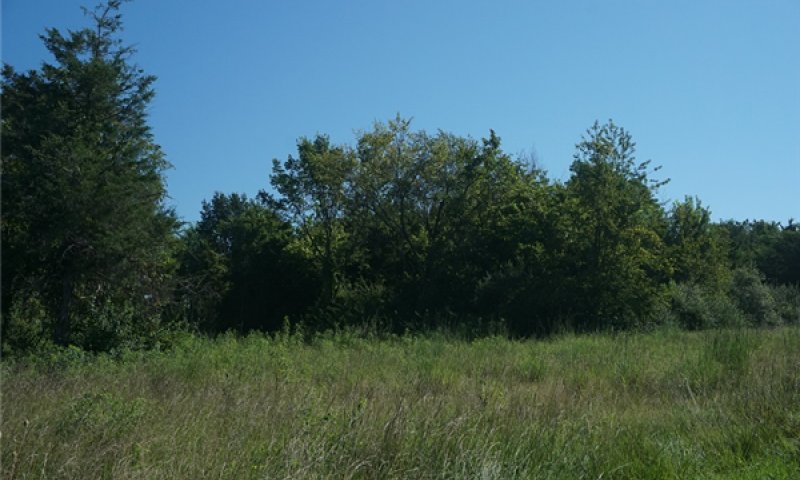
Figure 14. Woody invaded state on a claypan soil near Williamsburg, Missouri; photo credit - Fred Young, NRCS
This phase is the result of prolonged fire suppression. With longer fire intervals woody species such as pin oak, shingle oak, and eastern redcedar, along with other shrubs, have developed and begun to form a tree canopy. Because of this native grass and forb densities are reduced.
State 3
Cool Season Grassland
Conversion of other states to non-native cool season species such as tall fescue (Schedonorus arundinaceus), orchardgrass (Dactylis glomerata) and red clover (Trifolium pretense) has been common in the Missouri Central Claypan area. Occasionally, these pastures will have scattered pin oaks. This state is typically grazed or used for hay land. Long term uncontrolled grazing and a lack of grassland management can cause significant soil erosion and compaction and increases in less productive species such multiflora rose (Rosa multiflora), Kentucky bluegrass (Poa pratensis) and weedy forbs.
Community 3.1
Tall Fescue - Orchardgrass - Red Clover
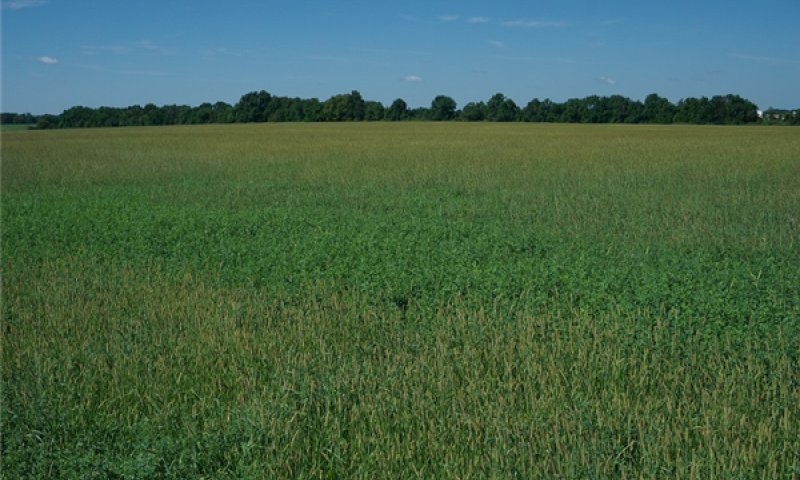
Figure 15. Cool season grassland state on a claypan soil near Hatton, Missouri; photo credit - Fred Young, NRCS
This phase is a well-managed grassland, composed of non-native cool season species. Grazing and haying is occurring. The effects of long-term liming on soil pH, and calcium and magnesium content, is most evident in this phase. Studies show (Conant and others, 2001; Schellberg, and others, 1999) that these soils have higher pH and higher base status in soil horizons as much as two feet below the surface, relative to poorly managed grassland.
State 4
Cropland
This is the dominant state that exists currently with intensive cropping of corn (Zea mays), soybeans (Glycine max), and wheat (Triticum aestivum) occurring. Some conversion to cool season grassland occurs for a limited period of time before transitioning back to cropland.
Community 4.1
Cropland
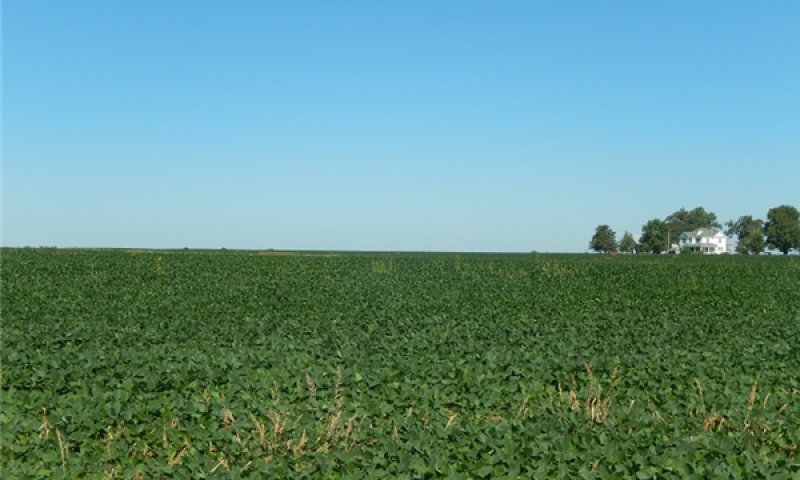
Figure 16. Soybean field on a "claypan" soil in Callaway County, Missouri; photo credit - Doug Wallace, NRCS
This phase is due to a land use conversion to intensive agriculture. Principal crops are corn, soybeans, and wheat. When summer soil moisture is adequate, double cropping of soybeans in wheat fields will occur.
State 5
Native Warm Season Grassland
Conversion from Cool Season Grassland (State 3) or Cropland (State 4) to this state is increasing due to renewed interest in warm season grasses as a supplement to cool season grazing systems or as a native restoration activity. This state is the most easily transformable state back to a reference state. Substantial restoration time and management inputs may be needed.
Community 5.1
Big Bluestem - Switchgrass
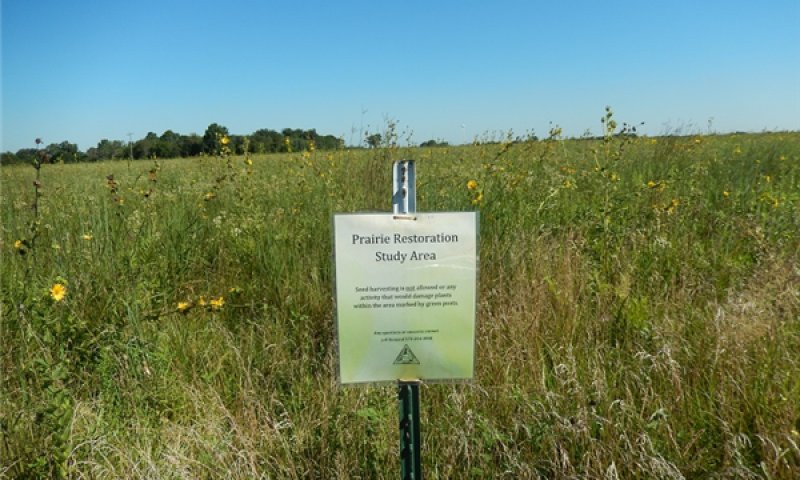
Figure 17. Restored prairie on Prairie Fork Conservation Area near Williamsburg, Missouri; photo credit - Doug Wallace, NRCS
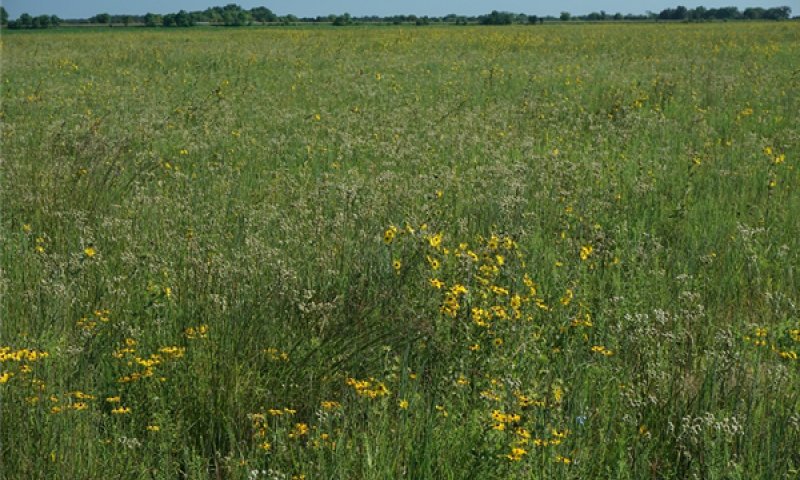
Figure 18. Restored prairie on Prairie Fork Conservation Area near Williamsburg, Missouri; photo credit - Fred Young, NRCS
This phase, generally through re-establishment, is a native grassland phase dominated by native grasses such as big bluestem and Indian grass. Forbs are seldom present.
Transition T1A
State 1 to 2
Fire suppression activities for greater than 20 years and woody invasion will result in a transition to community phase 2.1.
Transition T1B
State 1 to 3
Destroying the prairie sod with tillage, adding a cool season grass/legume vegetative seeding and grassland management will result in a transition to community phase 3.1.
Transition T1C
State 1 to 4
Removing the prairie sod with tillage and adding a conservation cropping system and surface drainage will result in a transition to community phase 4.1.
Restoration pathway R2A
State 2 to 1
This state can be restored to a reference state with woody removal, brush management, planting additional native grass and forb species (if needed) and initiating a prescribed fire regime (every 1 to 3 years). Limited controlled grazing may also be needed.
Conservation practices
| Brush Management | |
|---|---|
| Prescribed Burning | |
| Forage and Biomass Planting | |
| Prescribed Grazing |
Transition T2A
State 2 to 3
Woody removal, brush control, removing the prairie sod with tillage seeding cool season grass and legume species and incorporating grassland management will result in a transition to community phase 3.1.
Transition T2B
State 2 to 4
Woody removal, brush control, removing the prairie sod with tillage and incorporating conservation cropping system and surface drainage will result in a transition to community phase 4.1.
Transition T3A
State 3 to 4
Removing the cool season sod with tillage and adding a conservation cropping system and surface drainage will result in a transition to community phase 4.1.
Transition T3B
State 3 to 5
Killing the existing cool season sod, reseeding to native warm season grasses and adding prescribed fire will result in a transition to community phase 5.1.
Transition T4A
State 4 to 3
A seeding of cool season grasses and legumes and grassland management will result in a transition to community 3.1.
Transition T4B
State 4 to 5
A seeding of native warm season grasses and grassland management will result in a transition to community 3.1. Prescribed fire is added in many cases.
Restoration pathway R5A
State 5 to 1
This state can be restored to a reference state by planting additional native grass and forb species and initiating or maintaining a prescribe fire regime (every 1 to 3 years). Limited controlled grazing may also be needed.
Conservation practices
| Prescribed Burning | |
|---|---|
| Forage and Biomass Planting | |
| Restoration and Management of Rare and Declining Habitats |
Transition T5A
State 5 to 3
Removing the warm season grass sod, adding seasonal tillage, surface drainage and a conservation cropping system will result in a transition to community 3.1.
Additional community tables
Table 8. Community 1.1 forest understory composition
| Common name | Symbol | Scientific name | Nativity | Height (ft) | Canopy cover (%) | |
|---|---|---|---|---|---|---|
|
Grass/grass-like (Graminoids)
|
||||||
| Indiangrass | SONU2 | Sorghastrum nutans | Native | 0.3–6.5 | 5–25 | |
| big bluestem | ANGE | Andropogon gerardii | Native | 0.3–6.5 | 5–25 | |
| little bluestem | SCSC | Schizachyrium scoparium | Native | 0.3–4.5 | 5–24 | |
| prairie dropseed | SPHE | Sporobolus heterolepis | Native | 0.3–2 | 0.1–5 | |
| marsh bristlegrass | SEPA10 | Setaria parviflora | Native | 0.3–2 | 0–2 | |
| sideoats grama | BOCU | Bouteloua curtipendula | Native | – | – | |
| Bush's sedge | CABU5 | Carex bushii | Native | – | – | |
| Mead's sedge | CAME2 | Carex meadii | Native | – | – | |
| slender spikerush | ELTE | Eleocharis tenuis | Native | – | – | |
| switchgrass | PAVI2 | Panicum virgatum | Native | – | – | |
| eastern gamagrass | TRDA3 | Tripsacum dactyloides | Native | – | – | |
|
Forb/Herb
|
||||||
| ashy sunflower | HEMO2 | Helianthus mollis | Native | 0.3–2 | 5–75 | |
| Baldwin's ironweed | VEBA | Vernonia baldwinii | Native | 0.3–2 | 1–25 | |
| narrowleaf mountainmint | PYTE | Pycnanthemum tenuifolium | Native | 0.3–2 | 2–5 | |
| Texas goldentop | EUGY | Euthamia gymnospermoides | Native | 0.3–2 | 1–5 | |
| sessileleaf ticktrefoil | DESE | Desmodium sessilifolium | Native | 0.3–2 | 0–2 | |
| roundhead lespedeza | LECA8 | Lespedeza capitata | Native | 0.3–1 | 0–2 | |
| button eryngo | ERYU | Eryngium yuccifolium | Native | 0.3–2 | 0.1–1 | |
| arrowhead rattlebox | CRSA4 | Crotalaria sagittalis | Native | 0.3–2 | 0–1 | |
| slickseed fuzzybean | STLE6 | Strophostyles leiosperma | Native | 0.3–1 | 0.1–1 | |
| Indianhemp | APCA | Apocynum cannabinum | Native | 0.3–2 | 0.1–1 | |
| common cinquefoil | POSI2 | Potentilla simplex | Native | 0.3–1 | 0–0.2 | |
| Arkansas bedstraw | GAAR4 | Galium arkansanum | Native | 0.3–0.5 | 0–0.1 | |
| partridge pea | CHFA2 | Chamaecrista fasciculata | Native | 0.3–1 | 0–0.1 | |
| Seneca snakeroot | POSE3 | Polygala senega | Native | 0.3–5 | 0–0.1 | |
| downy phlox | PHPI | Phlox pilosa | Native | 0.3–1 | 0–0.1 | |
| Virginia groundcherry | PHVI5 | Physalis virginiana | Native | 0.3–1 | 0–0.1 | |
| Missouri goldenrod | SOMI2 | Solidago missouriensis | Native | – | – | |
| arrowleaf violet | VISAS5 | Viola sagittata var. sagittata | Native | – | – | |
| prairie blazing star | LIPY | Liatris pycnostachya | Native | – | – | |
| wild quinine | PAIN3 | Parthenium integrifolium | Native | – | – | |
| purple milkwort | POSA3 | Polygala sanguinea | Native | – | – | |
| whorled milkwort | POVE | Polygala verticillata | Native | – | – | |
| Texas star | SACA3 | Sabatia campestris | Native | – | – | |
| wholeleaf rosinweed | SIIN2 | Silphium integrifolium | Native | – | – | |
| groovestem Indian plantain | ARPL4 | Arnoglossum plantagineum | Native | – | – | |
| prairie milkweed | ASSU3 | Asclepias sullivantii | Native | – | – | |
| butterfly milkweed | ASTU | Asclepias tuberosa | Native | – | – | |
| white wild indigo | BAAL | Baptisia alba | Native | – | – | |
| longbract wild indigo | BABR2 | Baptisia bracteata | Native | – | – | |
| Illinois bundleflower | DEIL | Desmanthus illinoensis | Native | – | – | |
|
Shrub/Subshrub
|
||||||
| Carolina rose | ROCA4 | Rosa carolina | Native | 0.3–1 | 0–2 | |
| northern dewberry | RUFL | Rubus flagellaris | Native | 0.3–1 | 0–0.1 | |
| smooth sumac | RHGL | Rhus glabra | Native | 0.3–2 | 0–0.1 | |
| leadplant | AMCA6 | Amorpha canescens | Native | – | – | |
| New Jersey tea | CEAM | Ceanothus americanus | Native | – | – | |
| gray dogwood | CORA6 | Cornus racemosa | Native | – | – | |
Interpretations
Animal community
Wildlife
Game species that utilize this ecological site include:
Northern Bobwhite will utilize this ecological site for food (seeds, insects) and cover needs (escape, nesting and roosting cover).
Cottontail rabbits will utilize this ecological site for food (seeds, soft mast) and cover needs.
Turkey will utilize this ecological site for food (seeds, green browse, soft mast, insects) and nesting and brood-rearing cover. Turkey poults feed heavily on insects provided by this site type.
White-tailed Deer will utilize this ecological site for browse (plant leaves in the growing season, seeds and soft mast in the fall/winter). This site type also can provide escape cover.
Migratory Waterbirds: Sora, Common Snipe and Virginia Rail
Bird species associated with this ecological site’s reference state condition:
Breeding birds as related to vegetation structure (related to time since fire, grazing, haying, and mowing):
Vegetation Height Short (< 1.5 feet, low litter levels, bare ground visible):
Grasshopper Sparrow, Horned Lark, Upland Sandpiper, Greater Prairie Chicken, Northern Bobwhite
Mid-Vegetation Height (1.5 – 3 feet, moderate litter levels, some bare ground visible):
Eastern Meadowlark, Dickcissel, Field Sparrow, Upland Sandpiper, Greater Prairie Chicken, Northern Bobwhite, Eastern Kingbird, Bobolink, Lark Sparrow
Tall Vegetation Height (> 3 feet, moderate-high litter levels, little bare ground visible):
Henslow’s Sparrow, Dickcissel, Greater Prairie Chicken, Field Sparrow, Northern Bobwhite, Sedge Wren, Northern Harrier, Red-Winged Blackbird, American Bittern
Brushy – Mix of grasses, forbs, native shrubs (e.g., Rhus copallina, Prunus americana, Rubus spp., Rosa carolina) and small trees (e.g., Cornus racemosa): Bell’s Vireo, Yellow-Breasted Chat, Loggerhead Shrike, Brown Thrasher, Common Yellowthroat
Winter Resident: Short-Eared Owl, Le Conte’s Sparrow
Migratory birds: Sora, Virginia Rail, Sedge Wren, American Bittern, Yellow Rail and Common Snipe.
Amphibian and reptile species associated with this ecological site’s reference state condition: prairies with or nearby to fishless ponds/pools (may be ephemeral) may have Eastern Tiger Salamander (Ambystoma tigrinum tigrinum) and Western Chorus Frog (Pseudacris triseriata triseriata); Northern Crawfish Frog (Rana areolata circulosa), Ornate Box Turtle (Terrapene ornata ornata), Western Slender Glass Lizard (Ophisaurus attenuatus attenuatus), Eastern Yellow-bellied Racer (Coluber constrictor flaviventris), Prairie Ring-necked Snake (Diadophis punctatus arnyi), and Bullsnake (Pituophis catenifer sayi).
Small mammals associated with this ecological site’s reference state condition: Least Shrew (Cryptotis parva), Franklin’s Ground Squirrel (Spermophilus franklinii), Plains Pocket Gopher (Geomys bursarius), Prairie Vole (Microtus ochrogaster), Southern Bog Lemming (Synaptomys cooperi), Meadow Jumping Mouse (Zapus hudsonius), Thirteen-lined Ground Squirrel (Spermophilus tridecemlineatus) and Badger (Taxidea taxus).
Invertebrates: Many native insect species are likely associated with this ecological site, especially native bees, ants, beetles, butterflies and moths, and crickets, grasshoppers and katydids. However information on these groups is often lacking enough resolution to assign them to individual ecological sites.
Insect species known to be associated with this ecological site’s reference state condition: Regal Fritillary butterfly (Speyeria idalia) whose larvae feed primarily on native prairie violets (Viola pedata, V. pedatifida, and V. sagittata); Mottled Dusky Wing butterfly (Erynnis martialis), Golden Byssus butterfly (Problema byssus kumskaka), Delaware Skipper butterfly (Atryone logan logan), and Crossline Skipper butterfly (Polites origenes). The larvae of the moth Eucosma bipunctella bore into compass plant (Silphium laciniatum) roots and feed and the larvae of the moth Eucosma giganteana bore into a number of Silphium species roots and feed. Native bees, important pollinators, that may be associated with this ecological site’s reference condition include: Colletes brevicornis, Andrena beameri, A. helianthiformis, Protandrena rudbeckiae, Halictus parallelus, Lasioglossum albipennis, L. coreopsis, L. disparilis, L. nymphaereum, Ashmeadiella bucconis, Megachile addenda, Anthidium psoraleae, Eucera hamata, Melissodes coloradensis, M. coreopsis, and M. vernoniae. The Short-winged Katydid (Amblycorypha parvipennis), Green Grasshopper (Hesperotettix speciosus) and Two-voiced Conehead katydid (Neoconcephalus bivocatus) are possible orthopteran associates of this ecological site.
Other invertebrate associates include the Grassland Crayfish (Procambarus gracilis).
(This section was developed by Mike Leahy, Natural Areas Coordinator, Missouri Department of Conservation, 2013; references for this section include: Easterla, 1962; Fitzgerald and Pashley. 2000b; Heitzman and Heitzman 1996; Jacobs 2001; Johnson 2000; Pitts and McGuire 2000; Schwartz and others 2001)
Hydrological functions
Most precipitation on sites in the reference prairie state infiltrates into the surface layer of the soil, then moves slowly as lateral flow across the top of the claypan. This lateral flow emerges in other ecological sites downslope, as seeps in variable source areas that form the headwaters of ephemeral streams. In cropland states, more precipitation leaves the site as surface runoff, often intercepted by agricultural terraces and captured in grassed waterways that drain to ephemeral streams. Relatively little precipitation percolates through the claypan to recharge the groundwater. In the Hydrogeomorpic (HGM) wetland classification system, this ecological site is in the Mineral Soil Flats class.
Recreational uses
There is very little recreational use of this ecological site, as nearly all of the sites are in cropland. The few sites in the prairie reference state (e.g., Tucker Prairie, Prairie Fork Conservation Area, Missouri) provide opportunities for birdwatching and wildflower viewing. Limited quail hunting opportunities exist along the downslope margins of some areas.
Other products
Pasture Suitability Group(s): WCU - Clayey Upland.
This group consists of deep, poorly drained upland soils that have slopes of less than 35 percent and a potential rooting depth of more than 40 inches. Wetness is the main management concern. These soils are well suited to most commonly grown forages. They are also well suited to wetness-tolerant, shallow-rooted legumes. They are generally too wet for alfalfa and Caucasian bluestem. In depression areas, maintaining stands of desirable species is difficult.
Other information
Forestry
Management: This ecological site is not recommended for traditional timber management activity. Historically this site was dominated by a ground cover of native prairie grasses and forbs. Some scattered open grown trees may have also been present. Alternate states may be suitable for non-traditional forestry uses such as windbreaks, environmental plantings, alley cropping (a method of planting, in which rows of trees or shrubs are interspersed with rows of crops) or woody bio-fuels
Supporting information
Inventory data references
Sampled Reference Sites: Claypan Summit Prairie
Plot TUPRUM01 – Putnam soil
Located in Tucker Prairie, Callaway County, MO
Latitude: 38.949531
Longitude: -91.990873
Plot TUPRUM02 - Mexico soil
Located in Tucker Prairie, Callaway County, MO
Latitude: 38.947341
Longitude: -91.992083
Type locality
| Location 1: Callaway County, MO | |
|---|---|
| Township/Range/Section | T48N R10W S12 |
| UTM zone | N |
| UTM northing | 587342.911 |
| UTM easting | 4311415.93 |
| Latitude | 38° 56′ 50″ |
| Longitude | -91° 59′ 31″ |
| General legal description | Plot TUPRUM02 - Mexico soil (reference) Located in Tucker Prairie |
References
-
United States Department of Agriculture, . 2022. Land Resource Regions and Major Land Resource Areas of the United States, the Caribbean, and the Pacific Basin.
Other references
Brinson, M.M. 1993. A hydrogeomorphic classification for wetlands. Technical Report WRP-DE-4, U.S. Army Corps of Engineers, Engineer Waterways Experiment Station, Vicksburg, MS.
Buyanovsky, G. A., C. L. Kucera and G. H. Wagner. 1987. Comparative Analyses of Carbon Dynamics in Native and Cultivated Ecosystems. Ecology, Vol. 68, No. 6, pp. 2023-2031
Clark, R. E. Alberts, R. Zobel, T. Sinclair, M. Miller, W. Kemper and C. Foy. 1998. Eastern gamagrass (Tripsacum dactyloides) root penetration into and chemical properties of claypan soils. In Root Demographics and Their Efficiencies in Sustainable Agriculture, Grasslands and Forest Ecosystems. James Box, Jr. (ed.). Springer Science + Business Media, B.V. Pages 19-42
Cowardin, L.M., V. Carter, F.C. Golet, and E.T. LaRoe. 1979. Classification of wetlands and deep-water habitats of the United States. U.S. Fish and Wildlife Service FWS/OBS-79/31.
Easterla, D. A. 1962. Avifauna of Tucker Prairie. Thesis, University of Missouri, Columbia, Missouri.
Fitzgerald, J.A. and D.N. Pashley. 2000b. Partners in Flight bird conservation plan for the Dissected Till Plains. American Bird Conservancy.
Heitzman, J.R. and J.E. Heitzman. 1996. Butterflies and moths of Missouri. 2nd ed. Missouri Department of Conservation, Jefferson City.
Jacobs, B. 2001. Birds in Missouri. Missouri Department of Conservation, Jefferson City.
Johnson, T.R. 2000. The amphibians and reptiles of Missouri. 2nd ed. Missouri Department of Conservation, Jefferson City.
Kucera, C. and M. Koelling, 1965. Productivity and turnover relationships in a native tallgrass prairie. Iowa State Coll. J. Sci. 39: 387-392.
Kucera, Dahlman and Koelling . total net productivity and turnover on an energy basis for tallgrass prairie. Ecology 52: 536-541
Kucera, C. 1991. Fire Studies at Tucker Prairie. Iowa Prairie Blazingstar.
Mudgal, A., S.H. Anderson, C. Baffaut, N.R. Kitchen and E.J. Sadler. 2010. Effects of long-term soil and crop management on soil hydraulic properties for claypan soils. Journal of Soil and Water Conservation November/December 2010. Vol. 65, No. 6, pp.393-403
Nelson, Paul W. 2010. The Terrestrial Natural Communities of Missouri. Missouri Department of Conservation, Jefferson City, Missouri.
Nigh, Timothy A. and Walter A. Schroeder. 2002. Atlas of Missouri Ecoregions. Missouri Department of Conservation, Jefferson City, Missouri.
Pitts, D.E. and W.D. McGuire. 2000. Wildlife management for Missouri landowners. 3rd ed. Missouri Department of Conservation, Jefferson City.
Rabinowitz, D, B. K. Bassett and G. E. Renfro. 1979. Abundance and Neighborhood Structure for Sparse and Common Grasses in a Missouri prairie. American Journal of Botany, Vol. 66, No. 7, pp. 867-869
Schmidt, N. David; Kucera, C. L. 1975. Arthropod food chain energetics in a Missouri tall grass prairie, pp. 143-154. In Wali, Mohan K. (ed.) / Prairie: a multiple view.
Schroeder, W.A. 1981. Presettlement prairie of Missouri. Missouri Department of Conservation, Natural History Series No. 2. Jefferson City, Missouri
Schwartz, C.W., E.R. Schwartz and J.J. Conley. 2001. The wild mammals of Missouri. University of Missouri Press, Columbia and Missouri Department of Conservation, Jefferson City.
Sims, P.L. and P.G. Risser. 2000. Grassland. Pp 323-356 in M.G. Barbour and W.D. Billings (eds.). North American terrestrial vegetation. Second Edition. Cambridge University Press, New York.
Tucker Prairie. 1990. Clair L. Kucera Research Station. Tucker Prairie Flora. Published by the Division of Biological Sciences, 105 Tucker Hall, Columbia, MO. Accessed November 8, 2019. https://tuckerprairie.missouri.edu/tucker-prairie-flora/
University of Missouri. 1959. The University of Missouri Tucker Prairie Research Area: an unbroken tract of tallgrass prairie preserved for scientific study: dedicated September 13, 1958.
Missouri handbook, no. 5.; University of Missouri bulletin, v.60, no. 28.; University of Missouri bulletin., Arts & science series, no. 9.
Young, Fred J., and Alice W. Geller. 1995. Soil Survey of Audrain County, Missouri. U.S. Dept. of Agric. Natural Resources Conservation Service.
United States Department of Agriculture – Natural Resource Conservation Service (USDA-NRCS). 2006. Land Resource Regions and Major Land Resource Areas of the United States, the Caribbean, and the Pacific Basin. U.S. Department of Agriculture Handbook 296. 682 pps.
Zimmerman, U. D, and C. L. Kucera. 1977. Effects of Composition Changes on Productivity and Biomass Relationships in Tallgrass Prairie. American Midland Naturalist, Vol. 97, No. 2, pp. 465-469
Contributors
Doug Wallace
Fred Young
Approval
Suzanne Mayne-Kinney, 5/17/2024
Acknowledgments
Missouri Department of Conservation and Missouri Department of Natural Resources personnel provided significant and helpful field and technical support in the development of this ecological site.
Rangeland health reference sheet
Interpreting Indicators of Rangeland Health is a qualitative assessment protocol used to determine ecosystem condition based on benchmark characteristics described in the Reference Sheet. A suite of 17 (or more) indicators are typically considered in an assessment. The ecological site(s) representative of an assessment location must be known prior to applying the protocol and must be verified based on soils and climate. Current plant community cannot be used to identify the ecological site.
| Author(s)/participant(s) |
Douglas Wallace NRCS ACES Ecologist |
|---|---|
| Contact for lead author |
Parkade Center NRCS 601 Business Loop 70 West Columbia, MO 65203 |
| Date | 08/06/2015 |
| Approved by | Suzanne Mayne-Kinney |
| Approval date | |
| Composition (Indicators 10 and 12) based on | Foliar Cover |
Indicators
-
Number and extent of rills:
Rills are rare due to the extensive ground and thatch cover. -
Presence of water flow patterns:
Water flows in interstitial areas between grass and forb hummocks. -
Number and height of erosional pedestals or terracettes:
rare; < 1 inch in height -
Bare ground from Ecological Site Description or other studies (rock, litter, lichen, moss, plant canopy are not bare ground):
Bare ground areas are rare in unburned areas. Bare ground occurs immediately after prescribed burns that remove significant amounts of plant material. Within a few months after the burn the site is recovered. -
Number of gullies and erosion associated with gullies:
none -
Extent of wind scoured, blowouts and/or depositional areas:
none -
Amount of litter movement (describe size and distance expected to travel):
minimal -
Soil surface (top few mm) resistance to erosion (stability values are averages - most sites will show a range of values):
Soil surface resistance to erosion is strong due the high amounts of ground cover and extensive root systems. -
Soil surface structure and SOM content (include type of structure and A-horizon color and thickness):
0-12 inches very dark grayish-brown; SOM <5% -
Effect of community phase composition (relative proportion of different functional groups) and spatial distribution on infiltration and runoff:
Infiltration and runoff are moderate. -
Presence and thickness of compaction layer (usually none; describe soil profile features which may be mistaken for compaction on this site):
none -
Functional/Structural Groups (list in order of descending dominance by above-ground annual-production or live foliar cover using symbols: >>, >, = to indicate much greater than, greater than, and equal to):
Dominant:
Warm season grasses > forbs > sedgesSub-dominant:
Other:
Additional:
-
Amount of plant mortality and decadence (include which functional groups are expected to show mortality or decadence):
All plant species should be capable of reproduction depending on water availability. All plants should be vigorous, healthy and reproductive depending on disturbance (e.g., drought). Plants should have numerous seed heads, vegetative tillers etc.
The only limitations are weather-related effects, wildfire, and natural disease that may temporarily reduce reproductive capability. -
Average percent litter cover (%) and depth ( in):
-
Expected annual annual-production (this is TOTAL above-ground annual-production, not just forage annual-production):
374 - 570 g/m2/yr net primary production (Rabinowitz and others, 1979; Buyanovsky and others, 1987) -
Potential invasive (including noxious) species (native and non-native). List species which BOTH characterize degraded states and have the potential to become a dominant or co-dominant species on the ecological site if their future establishment and growth is not actively controlled by management interventions. Species that become dominant for only one to several years (e.g., short-term response to drought or wildfire) are not invasive plants. Note that unlike other indicators, we are describing what is NOT expected in the reference state for the ecological site:
eastern redcedar, smooth sumac, sweet clover, tall fescue, teasel -
Perennial plant reproductive capability:
Better in normal to wet years and seasons. Poorer in dry years and seasons.
Print Options
Sections
Font
Other
The Ecosystem Dynamics Interpretive Tool is an information system framework developed by the USDA-ARS Jornada Experimental Range, USDA Natural Resources Conservation Service, and New Mexico State University.
Click on box and path labels to scroll to the respective text.
Ecosystem states
States 1 and 5 (additional transitions)
| T1A | - | Fire suppression greater than 20 years, woody invasion |
|---|---|---|
| T1B | - | Tillage, vegetative seeding, grassland management |
| T1C | - | Tillage, conservation cropping system, surface drainage. |
| R2A | - | Woody removal, prescribed fire 1-3 years |
| T2A | - | Woody removal, tillage, vegetative seeding, grassland management |
| T2B | - | Woody removal, tillage, conservation cropping system |
| T3A | - | Tillage, conservation cropping system, surface drainage. |
| T3B | - | Vegetative seeding, prescribed fire, grassland management |
| T4A | - | vegetative seeding grassland management |
| T4B | - | Vegetative seeding, prescribed fire, grassland management |
| R5A | - | Vegetative seeding, prescribed fire 1-3 years |
| T5A | - | Tillage, conservation cropping system, surface drainage. |
State 1 submodel, plant communities
| 1.1A | - | Fire-free interval greater than 10 years |
|---|---|---|
| 1.2A | - | Fire interval 1-3 years |